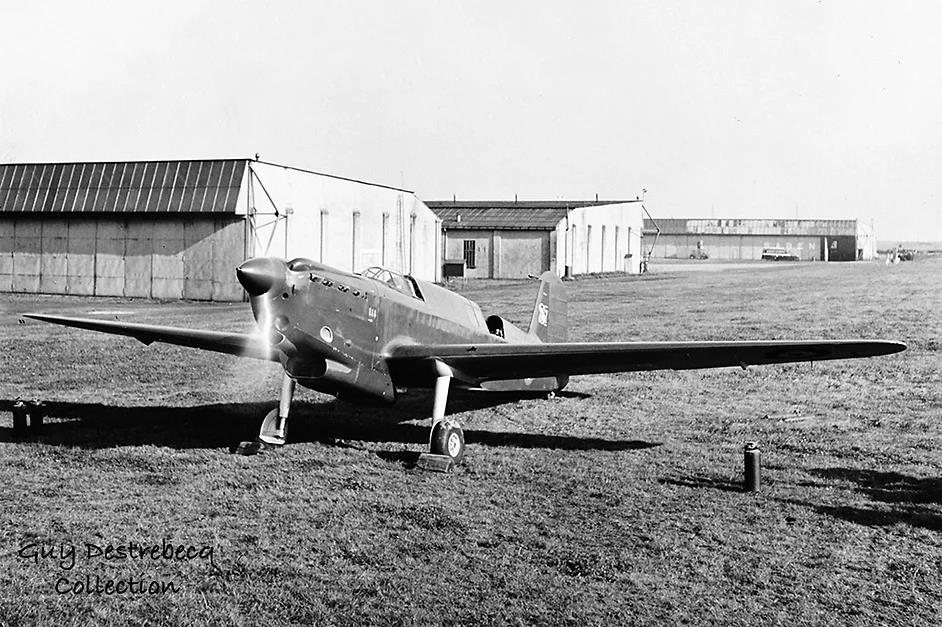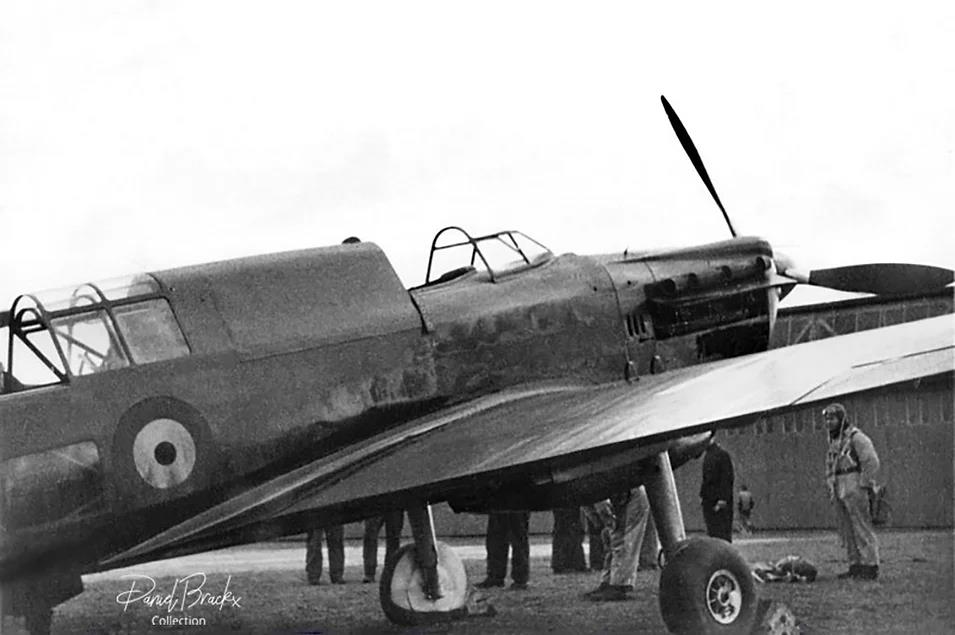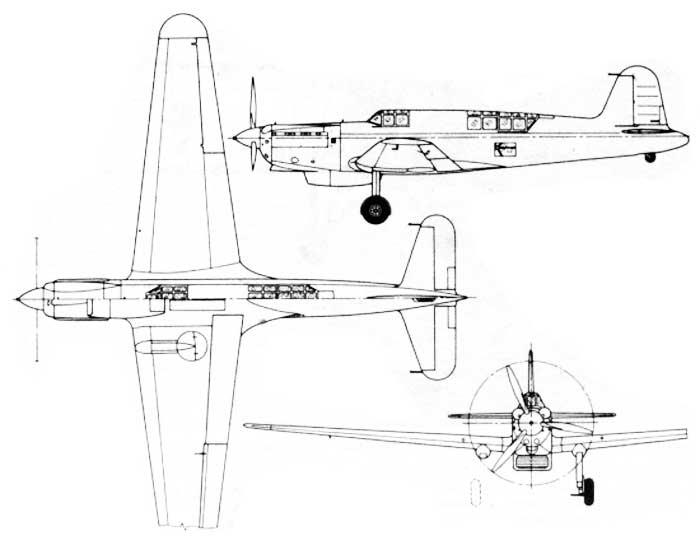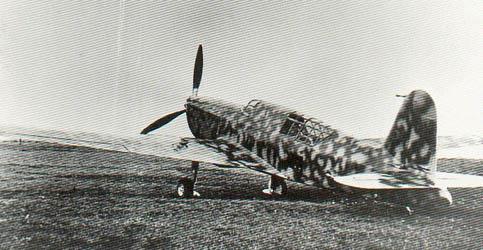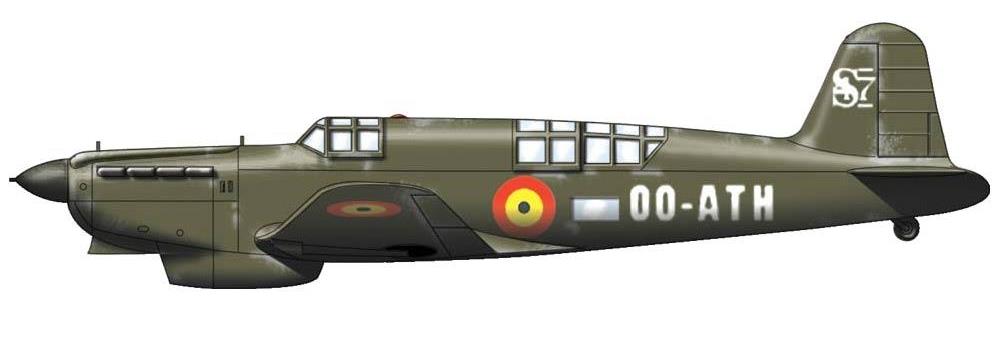Caproni, tried around 1937 to sell the Ca.135 and the rnulti-purpose airplane Ca.310 to Belgium. The Belgian firm SABCA acquired the licence to sell these two planes. The Belgian Air Force, at that time, was still equipped with the old Fairey Fox two-seat light bomber biplane, but was looking to replace it with a modem design. Although Fairey had a strong foothold in Belgium in form of an own plant (Aviations Fairey), SABCA and Caproni in 1938 made a new agreemenl to develop a competitor to the contemporary Fairey Battle.
Caproni got obliged with the construction of the airframe, while SABCA had to care for engine, propeller and armament, and so the Ca.335. called "Maestrale" (northwest wind, in French "Mistral"), was drafted by Caproni chief engineer Cesare Pallavicino.
Pallavicino chose a clear cantilever low-wing design for a crew of two. The observer/rear gunner, sitting under a "greenhouse" glass roof in the rear fuselage, could be auxiliary pilot, having a set of controls of his own. The construction of steel tubes, the fuselage was covered with aluminium plates, the wing with plywood. The whole back edge of the wing was covered with flaps for short landing distances. The aircraft was powered by the French Hispano-Suiza HS 12Y twelve-cylinder V-engine, delivering 860 hp and allowing to install a 20mm cannon firing through the propeller hub. Armament was completed by two wing-mounted 7,7 mm machine guns and a flexible one for the second crew member. A small bomb bay could carry two 50 kg bombs, while ten 10 kg bombs were to be mounted externally.
From the beginning, the aircraft was designed to serve as fighter, light bomber or reconnaissance aircraft. The airplane was completed at Caproni's factory in Ponte San Pietro and flew for the first time on February 16th, 1939, with test pilot Ettore Wengi at the controls.
In June that year, it was dismantled and sent by train to SABCA in Belgium. The next month, it was on display at the Salon International at Brussels.
After fitting the missing equipment, the flight tests continue in Belgium under the civil registration OO-ATH and painted with Belgian military roundels from September 19th on. with SABCA's chief test pilot Paul Bumiat at the controls. With a speed of 501 (other source says even 515) km/h and a ceiling of 10.500 m. the aircraft showed very fine performances. Nothing negative is said about the flight characteristics, so it can be assumed that the tests ran smoothly. On January 13th, it is demonstrated at Evere to the Belgian Militaire
Vliegwezen/Aeronautique Militaire. resulted in an option for 24 aircraft to be produced. On this occasion , the S.47 was also shown to foreign military delegations.
SABCA had purchased the manufacturing licence on November 30th. 1939. On March 14th, 1940. the S.47 was flown together with the SABCA S.40 training aircraft to Orleans-Bricy (French test center), to be presented to officers of the French Armee de I'Air There, because of bad weather conditions, the aircraft is slightly damaged in a landing accident, when it collided with a truck.
| Type |
2-seat light bomber and reconnaissance aircraft |
| Engine |
1 Hispano-Suiza 12Ycrs, 3-blade constant speed propeller |
| Dimensions |
Length 10,61 m , height 3,20 m , span 13,20 m , wing area 23,80 m2 , |
| Weights |
Empty 2250 kg, loaded 3240 kg, max. take off weight 3350 kg |
| Performance |
Max.. speed 501 km/h at 4200 m, cruising speed , range 1576 km at 4000 m, endurance 4 h 30 min. , service ceiling 9500 m , time to 2000 m 3 min. 30 sec., to 6000 m 15 min. 20 sec. |
| Armament |
1 20 mm Hispano-Suiza HS.404 firing through propeller hub and two 7.62 mm FN Browning machine guns in wing, 1 FN Browning machine gun in rear cockpit Bombs: 200 kg (440 lb) under wings and fuselage |
| Type |
Werk.Nr |
Registration |
History |
|
|
OO-ATH |
Delivered 1939..On 14 March 1940, the prototype was being demonstrated to the French Armee de l'Air at Orléans when it was damaged in a minor landing accident. It had not been repaired when the Germans invaded France and the Low Countries, stopping SABCA's production plans. The prototype S.47 was captured by the advancing German forces on 13 June 1940. Attempts by Caproni to reclaim the S.47 were unsuccessful, it remaining in France until 1943, eventually being scrapped |
